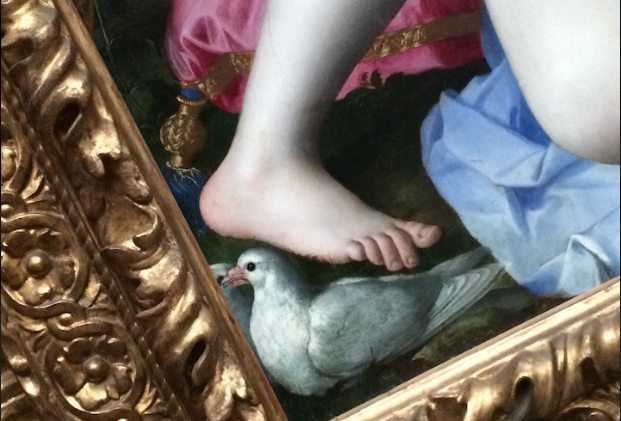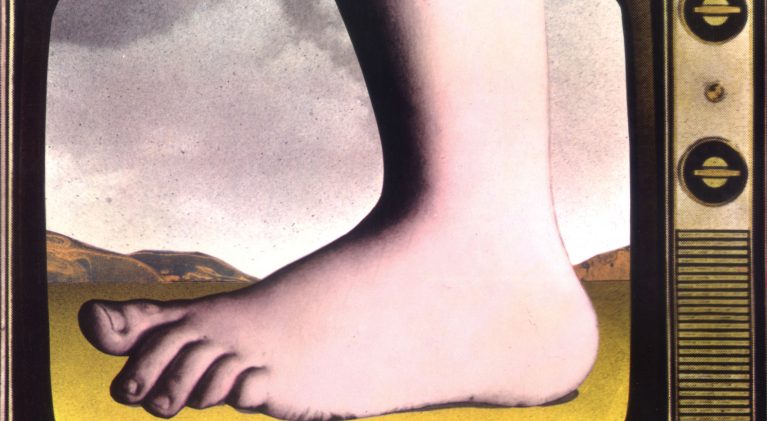Ever wonder where THE Monty Python foot came from?
Hanging in Room 8 of London’s National Gallery is a rather unassuming painting. Bronzino’s Mannerist masterpiece, An Allegory with Venus and Cupid, was made in the mid-1500s for King Francis I, the King of France reigning from 1515 until his death in 1547. The piece, which hangs alongside works by Michelangelo and Raphael, depicts Cupid kissing his mother Venus, with great detail and texture. What you may not be aware of, however, is that hundreds of years after Bronzino created his allegorical painting, a young animator working on a British television show wandered aimlessly through the museums of London looking for inspiration and imagery to use at work. The ‘young animator’ was none other than the talented and gifted Terry Gilliam and ‘the work’ was the epic British comedy series Monty Python’s Flying Circus.
If you look carefully at the bottom left corner of the painting, you may notice that Cupid’s foot just happens to be the inspiration of the emblematic foot which became a trademark icon for the Monty Python comedy troupe.

As reported by Atlas Obscura, this was something Gilliam did quite frequently as his collage-like animations would combine borrowed bits and pieces of famous paintings and photography. Gilliam would remove the images from their original context and juxtapose them with other absurdities to where they worked perfectly with the show’s humor and also then double as a commentary on classical art. Gilliam’s style for Python would transform many of the classic images into, well, something completely different.

Big ‘tip of the hat’ to Tellyspotting friend and reader, Amy Martin, for finding this bit of trivia greatness.
In: Odds & Sods






